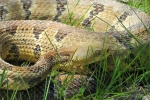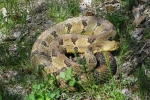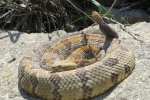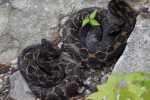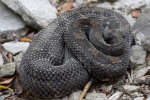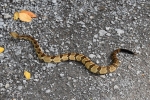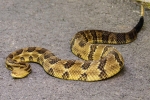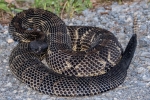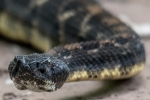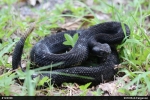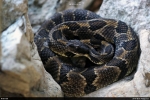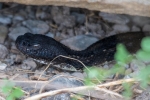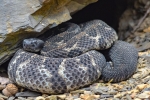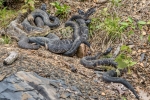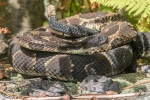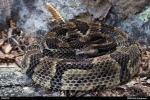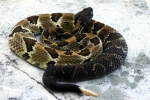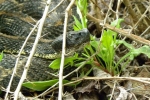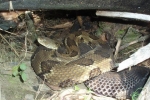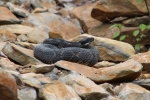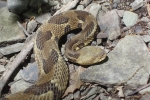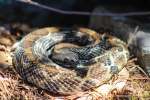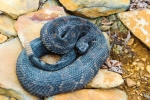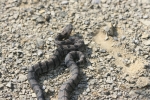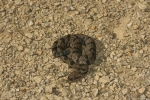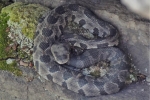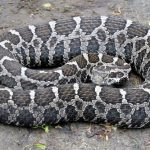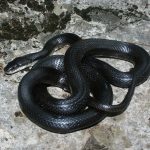Timber Rattlesnake - Venomous
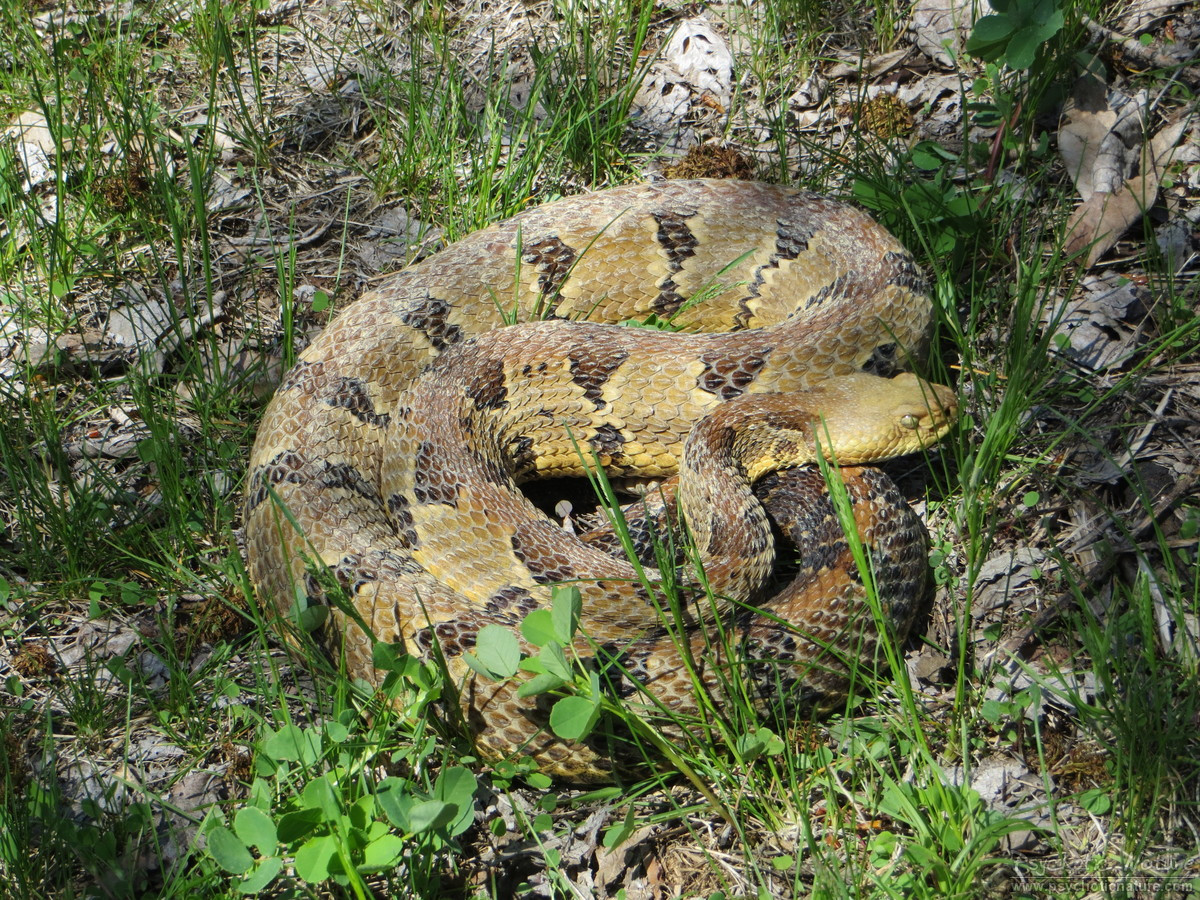
Scientific Name: Crotalus horridus
Size: 36 - 60 inches (90 - 152 cm)
Status: Species of Special Concern
Habitat:
Upland forest with rocky outcroppings, talus slops, rock crevices, rock ledges with vegetation, mature forest with numerous fallen logs, young forest with predominant leaf litter cover.
Description:
Large-sized, heavy bodied species. There are 2 distinct patterns in PA: Yellow Phase (light) and Black Phase (dark). The background is yellowish brown to dark brown with a bold pattern of dark brown, grey to black Chevron like “V" shaped body bands and blotches. The bands and blotches are set of from the background by a pale yellow to beige border. The tail is unpatterned and solid grey, brown or black. The underside is cream to yellowish brown and may be mottled with small black stipples. The head has a dark stripe extending backwards from the eye to the corner of the mouth. Melanistic and Albino species have been found in PA. The head is large, flat and triangular in shape. The head is distinct and set off from the body by a narrow neck. Pupils are vertically elliptical. Deep set pits between the eyes and nostrils. The dorsal scales are strongly keeled.
- There are 2 distinct patterns in PA: Yellow Phase (light) and Black Phase (dark).
- The dorsal background is yellowish brown to dark brown.
- The dorsal has a bold pattern of dark brown, grey to black Chevron like “V” shaped body bands and blotches.
- The bands and blotches are set of from the background by a pale yellow to beige border.
- The tail is unpatterned and solid grey, brown or black.
- The bands continue to the tail.
- The ventral is cream to yellowish brown and may be mottled with small black stipples.
- The head has a dark stripe extending backwards from the eye to the corner of the mouth.
- Melanistic and Albino species have been found in PA.
- Large-sized, heavy bodied species.
- The head is large, flat and triangular in shape.
- The head is distinct and set off from the body by a narrow neck.
- Pupils are vertically elliptical.
- Deep set pits between the eyes and nostrils.
- The dorsal scales are strongly keeled.
- Similar to adults
- 23 or 25 scale rows at midbody.
- 25-27 scale rows at anterior.
- 19 scale rows at posterior.
- 154-183 ventral scales
- 13-31 subcaudals scales | Single row of subcaudals
- Higher than wide rostral scale
- 2 internasal scales
- 4 canthal scales
- 2 supraocular
- 2 nasal scales
- 2 loreal scales
- 2 preocular scales
- several subocular scales
- 4 postocular scales
- several temporal scales
- 13-15 supralabials
- 14-16 infralabials
- Anal plate is undivided


References:
- Hulse, C. and McCoy C. J. and Ellen Censky ,1998. Amphibians and Reptiles of Pennsylvania and the Northeast. 351-355pp.
- Ernst, Carl H. and Ernst, Evelyn M. ,2003. Snakes of the United States and Canada. 503-509pp.
- Jason Poston
- Kyle Loucks
- Phil Dunning
- Don Becker (psychoticnature.com)
- Bob Ferguson
- Kyle Fawcett
Heads up!
Please contribute your observation of this and other herps to the Pennsylvania Amphibian and Reptile Survey. Your help is needed.
